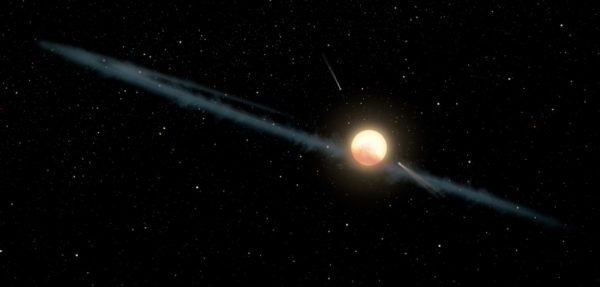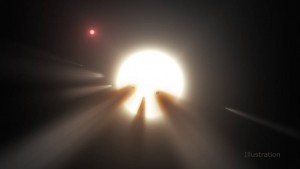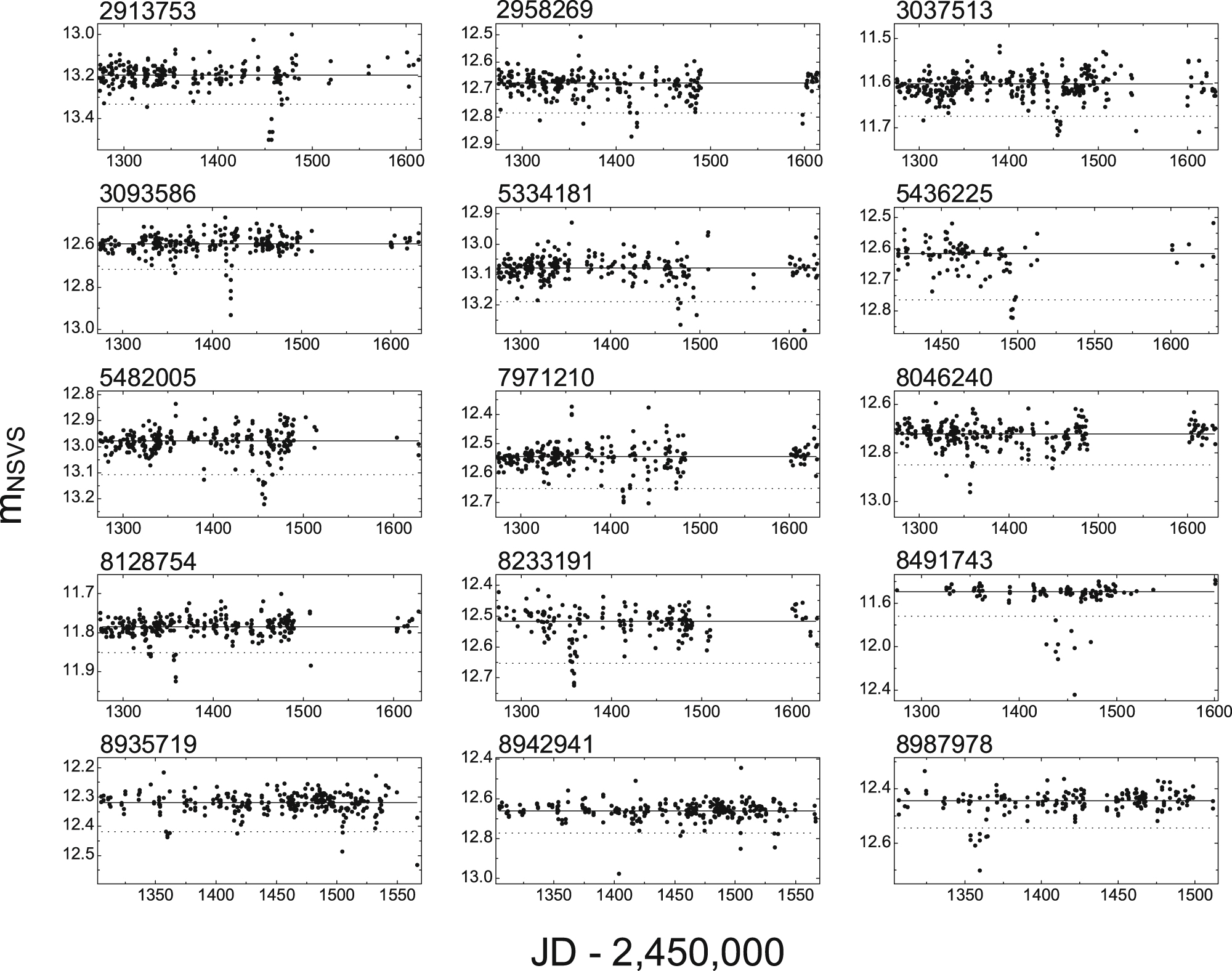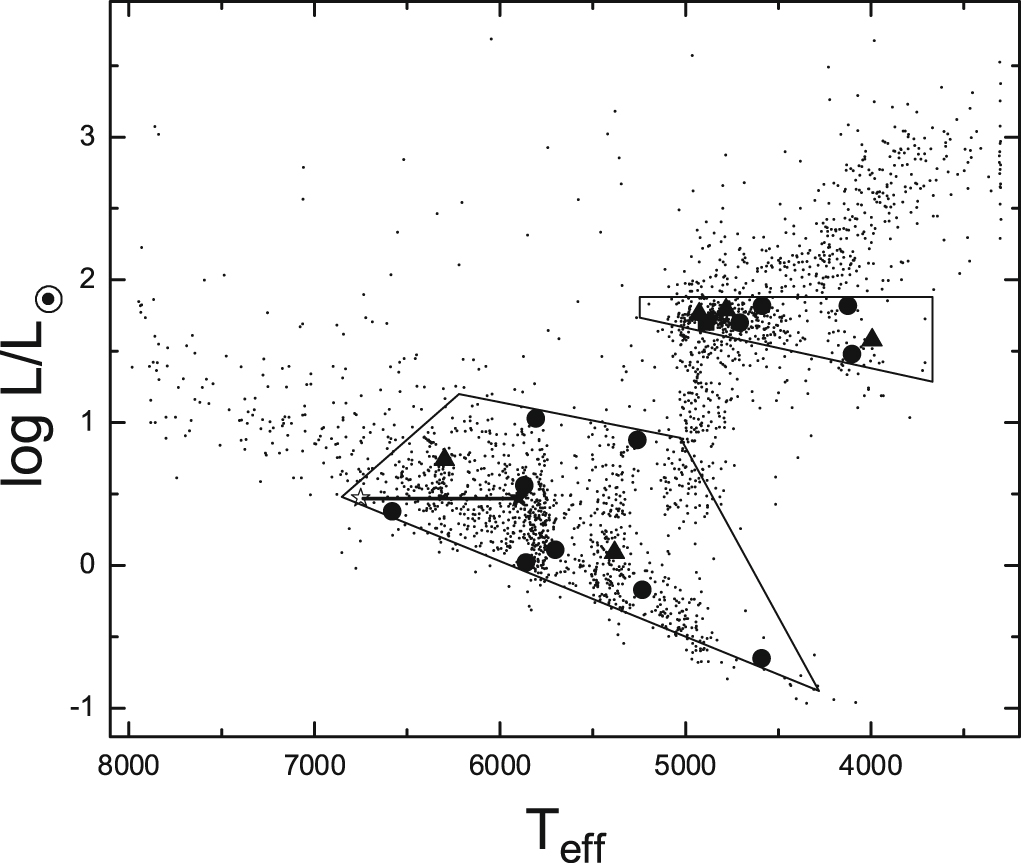Are There More Stars Like Boyajian’s Star? – SkyandTelescope.com
Remember KIC 8462852, better known as Boyajian’s star (or you may have seen it referred to as the “alien megastructure” star)? We still don’t have a definitive explanation for this source’s odd behavior — in part because we thought that Boyajian’s star was one-of-a-kind.
But what if it isn’t?

Artist’s impression of a hypothetical ring of dust orbiting KIC 8462852, also known as Boyajian’s star. A new study has found a number of analogs to this mysteriously dipping source.
NASA / JPL-Caltech
Unusual Dimming

In this artist’s illustration, a star’s light is blocked by orbiting comets. A swarm of comets is just one of the many explanations that have been proposed for Boyajian’s unusual light-curve dips.
NASA / JPL-Caltech
Boyajian’s star was first discovered in 2016 by a group of citizen scientists examining light curves in the Planet Hunters Project. This seemingly ordinary source was doing something rather extraordinary: its light curve showed a series of unusual and irregular dips scattered across 1,460 days of observation by Kepler.
More dips were found later in ensuing data. The dips last anywhere from a few days to a week, didn’t appear to be periodic, and block out 0.5–22% of the star’s light — presenting a combination of traits that seem to rule out most ordinary explanations, such as transiting planets or intrinsic stellar variability. So what causes this bizarre star’s odd behavior?
The Hunt for Analogs
Thus far, our search for conclusive answers remains hindered by a scarcity of data. Future observations of Boyajian’s star will continue to help us better understand its behavior — but that still leaves us working with a sample size of one star, which makes it hard to determine anything with certainty.
But what if there are more stars like Boyajian’s star?
A new study published by scientist Edward Schmidt (University of Nebraska, Lincoln) details the hunt for analogs of this unusual dipper — with a number of successes!
More Dippers Found!

Light curves for the 15 slow-dipper candidates identified in the study. Click to enlarge.
Schmidt 2019
Schmidt looked for Boyajian’s star analogs by applying an automated search algorithm to a subset of the Northern Sky Variable Survey dataset, a catalog of light curves for more than 14 million objects observed in a vast photometric survey of variable stars.
The algorithm identified light curves that showed dipping events similar to Boyajian’s star. Schmidt then followed up on promising candidates manually, exploring their light curves from the All Sky Automated Survey for Supernovae (ASAS-SN) and rejecting sources whose dips could be readily explained by things like a binary companion or intrinsic variability.
In the end, Schmidt was left with a total of 21 stars showing possible unusual, unexplained dipping.
Further Observations, Please
The new dimming stars fall into two categories:
-
15 slow dippers, whose light curves show dimming with rates similar to Boyajian’s star. These sources may well be analogs of Boyajian’s star.
- 6 rapid dippers, whose light curves show even more frequent variability. These sources may be more extreme versions of Boyajian’s star.

An H-R diagram showing the locations of the 21 candidate dipping stars (circles represent slow dippers; triangles represent rapid dippers) found in this study. They seem to cluster in two distinct regions of the diagram.
Schmidt et al. 2019
Data from the Gaia Data Release 2 show that the dipper candidates cluster in two locations on an HR diagram, suggesting that dippers tend to be main-sequence stars of ~1 solar mass or evolved red giants of ~2 solar masses.
So what’s next? Schmidt encourages other astronomers to follow up on these candidates and observe their behavior over longer timescales! Perhaps one of these new dimming stars can reveal what’s going on with Boyajian’s star — and its analogs.
Citation
“A Search for Analogs of KIC 8462852 (Boyajian’s Star): A Proof of Concept and the First Candidates,” Edward G. Schmidt 2019 ApJL 880 L7. doi:10.3847/2041-8213/ab2e77
This post originally appeared on AAS Nova, which features research highlights from the journals of the American Astronomical Society.





